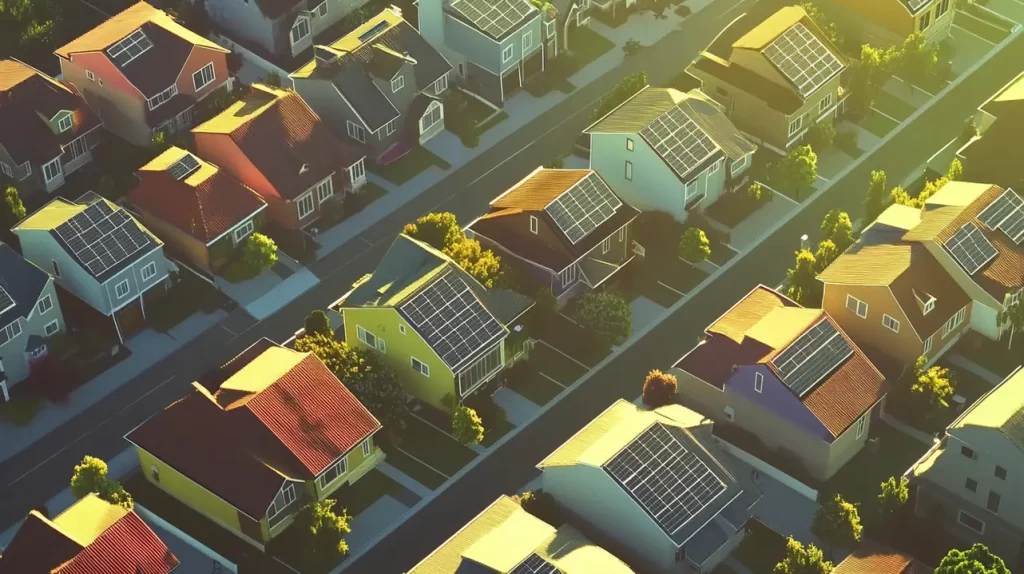At Jimmy’s Roofing in San Antonio, Texas, we know that a solid, well-maintained roof is more than just a shield against the elements; it’s also a pivotal component in enhancing a home’s energy efficiency. It’s somewhat like switching from driving a gas-guzzling van to a sleek, modern hybrid vehicle; the difference in energy consumption is significant and the benefits are undeniable.
The blazing San Antonio sun, much like the vibrant River Walk, attracts residents with its warm allure, but it can also lead to increased air conditioning costs during the summer months. A well-designed roof replacement can play a crucial role in reducing these costs, similar to how a properly insulated pair of cowboy boots keep Texans comfortable whether they’re exploring the Alamo or enjoying a leisurely stroll through the San Antonio Botanical Garden.
The materials and technology we use at Jimmy’s Roofing offer advanced solutions that can drastically improve your home’s energy performance. For instance, our specialty in metal roofing provides an excellent barrier against the heat. Metal roofs are remarkably effective in reflecting sunlight, thereby reducing the amount of heat that permeates your home. According to the U.S. Department of Energy, reflective metal roofing can save your home up to 25% in energy bills compared to a conventional asphalt roof. See their website at energy.gov for more information.
Additionally, another energy-efficient option is the installation of roof insulation during your roof replacement. Adequate insulation is akin to a thermal blanket that prevents conditioned air from escaping your home, ensuring that your HVAC system doesn’t have to work overtime. The result is a cooler home in the summer and a warmer home in the winter—a vital consideration considering San Antonio’s variable climatic shifts.
When considering a roof replacement, it’s essential to evaluate not only the upfront costs but also the long-term savings. The initial investment in energy-efficient materials can be offset by the decreased energy bills, much like investing in a dependable pair of hiking boots for a trek along the Mission Trail; the upfront cost might be higher, but the comfort and durability pay off in the end.
Our team at Jimmy’s Roofing understands that each homeowner’s needs are unique, and we’re here to help guide you through the process of selecting the best energy-saving solutions available. Much like the personalized service you’d expect from a visit to the Pearl Farmers Market, we provide tailored roofing solutions that speak to your specific circumstances and preferences.
Curious about how a new roof can specifically benefit your home in terms of energy efficiency? Here are some frequently asked questions:
**FAQ**
**1. How does roofing material impact energy efficiency?**
Roofing material can significantly affect a home’s energy efficiency. Reflective materials such as metal roofs can reduce heat absorption by reflecting sunlight, leading to cooler indoor temperatures and less reliance on air conditioning.
**2. Is metal roofing more energy-efficient than asphalt shingles?**
Yes, metal roofing tends to be more energy-efficient than asphalt shingles. The reflective properties of metal reduce heat absorption and help maintain cooler indoor temperatures, especially beneficial in hot climates like San Antonio’s.
**3. Can I choose any color for my energy-efficient roof?**
While darker colors may absorb more heat, there are energy-efficient options even in darker hues. It’s essential to consult with roofing experts to balance aesthetic preferences with energy-saving potential. Generally speaking, lighter colors tend to reflect more sunlight and can contribute to lower energy usage.
At Jimmy’s Roofing, we take pride in offering our expertise to the San Antonio community, ensuring that your home’s roof not only provides protection but also contributes to your overall energy savings. Visit us at our location on Roosevelt Avenue to learn more about our roofing services, or give us a call today to discuss how we can assist you. For more details on how building materials affect energy usage, you can explore resources provided by the U.S. Department of Energy’s Office of Energy Efficiency and Renewable Energy at energy.gov.

